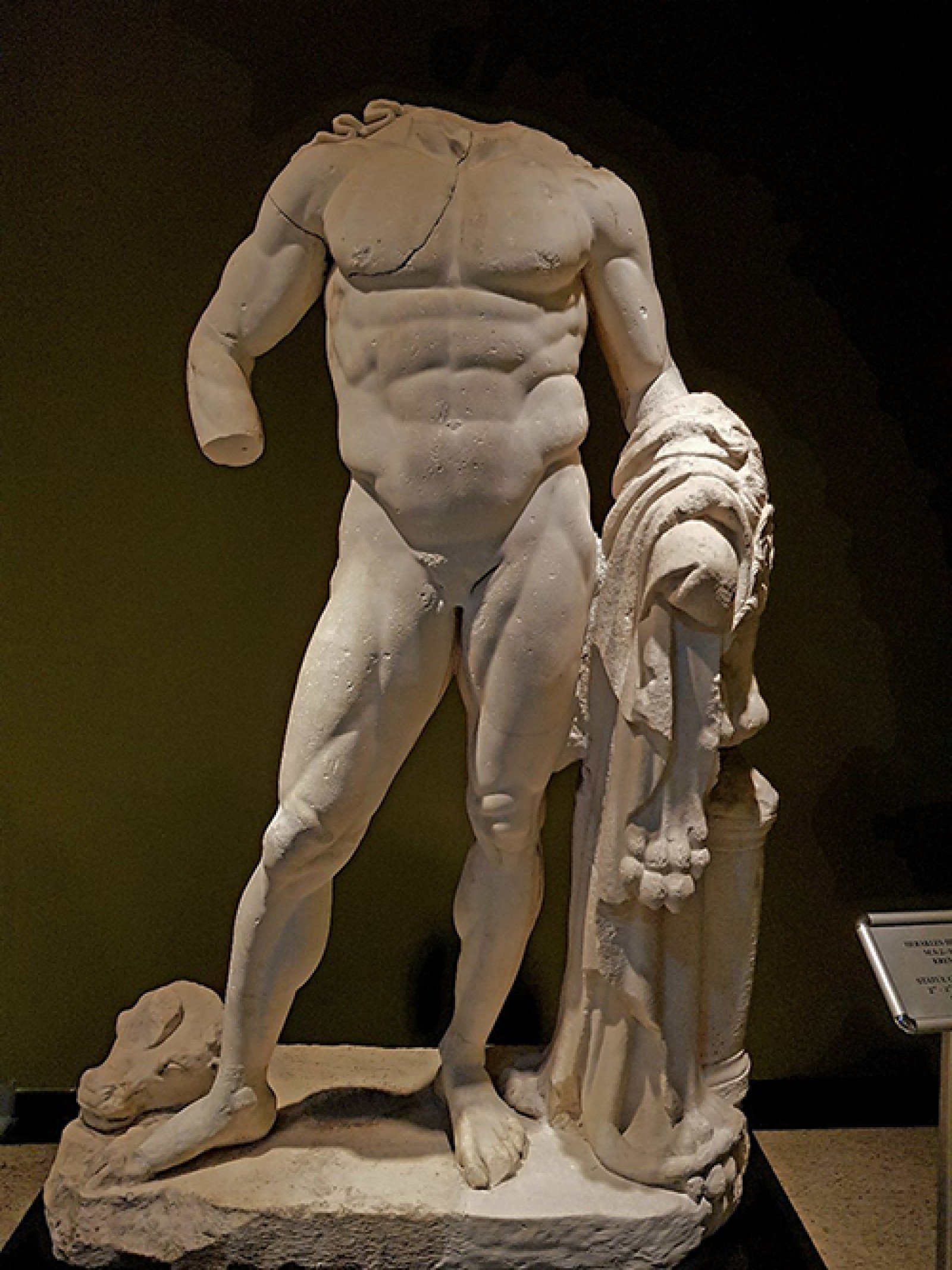Introduction
Heracles, known as the greatest of all Greek heroes, stands as a symbol of strength, endurance, and divine favor. As the son of the king of gods, Zeus, and the mortal woman Alcmene, Heracles was destined for greatness from birth. However, his life was far from simple, shaped by tragedy, relentless challenges, and ultimately, redemption. A newly presented statuette captures Heracles in a moment of exhaustion, offering a glimpse into his incredible journey, marked by the completion of his eleventh labor—retrieving the golden apples of the Hesperides.

Heracles’ Divine Birth and Early Trials
Heracles’ divine origin as Zeus’s son granted him extraordinary powers, but also placed him under the scrutiny and wrath of Zeus’s jealous wife, Hera. Hera despised Heracles for being the result of her husband’s infidelity, and her vengeance led her to curse him with madness. In his frenzy, Heracles tragically killed his wife and children, a moment that defined much of his path to redemption.
To atone for this crime, Heracles was forced to serve King Eurystheus, who assigned him twelve nearly impossible labors. Each task was a test of not only his strength, but his wit, endurance, and resilience.
The Twelve Labors of Heracles
Heracles’ twelve labors are among the most famous stories in Greek mythology. From slaying the Nemean Lion to capturing the Ceryneian Hind, these tasks pushed Heracles to his limits. However, it was his eleventh labor—retrieving the golden apples guarded by the Hesperides—that brought him near total exhaustion.

The golden apples, hidden in a garden at the edge of the world, were zealously guarded by the Hesperides, nymphs of evening light, and Ladon, a fearsome hundred-headed dragon. Heracles had to overcome this formidable defense to complete his task.
The Statuette: Heracles in Exhaustion
The recently presented statuette offers a powerful portrayal of Heracles immediately after completing his eleventh labor. In this delicate work, Heracles leans heavily on his club, which rests on the skin of the Nemean Lion, his trophy from his first labor. His weariness is palpable, a stark contrast to the often heroic depictions of him in moments of triumph.
Hidden Treasure and Dynamic Movement
One of the most intriguing elements of the statuette is how it invites the viewer to circle around it. At first glance, Heracles appears drained and solemn. But upon closer inspection, hidden behind his back, he holds the stolen golden apples in his right hand—an illustration of his successful completion of the labor, despite his fatigue.

This statuette is thought to be a copy of a lost bronze masterpiece by the celebrated Greek sculptor Lysippos, who revolutionized classical sculpture by breaking away from static poses. Instead of a fixed frontal gaze, Lysippos’s works emphasized movement, encouraging viewers to examine his figures from every angle. In this case, only by walking around the sculpture can one fully understand the significance of Heracles’ weariness and his achievement.
Conclusion: A Moment of Reflection
Heracles’ journey, marked by both triumph and tragedy, is beautifully captured in this fragmentary statuette. It is a reminder not only of his incredible strength but also of his humanity. Heracles, the mightiest of heroes, was capable of feeling exhaustion and despair. Yet, even in his most fatigued state, he succeeded, securing his place among the gods of Mount Olympus.
This artwork provides a nuanced glimpse into a quieter, more reflective moment of his journey—one that captures the essence of struggle and perseverance. Through this delicate portrayal, Heracles stands not only as a hero but as a symbol of endurance in the face of overwhelming odds.
